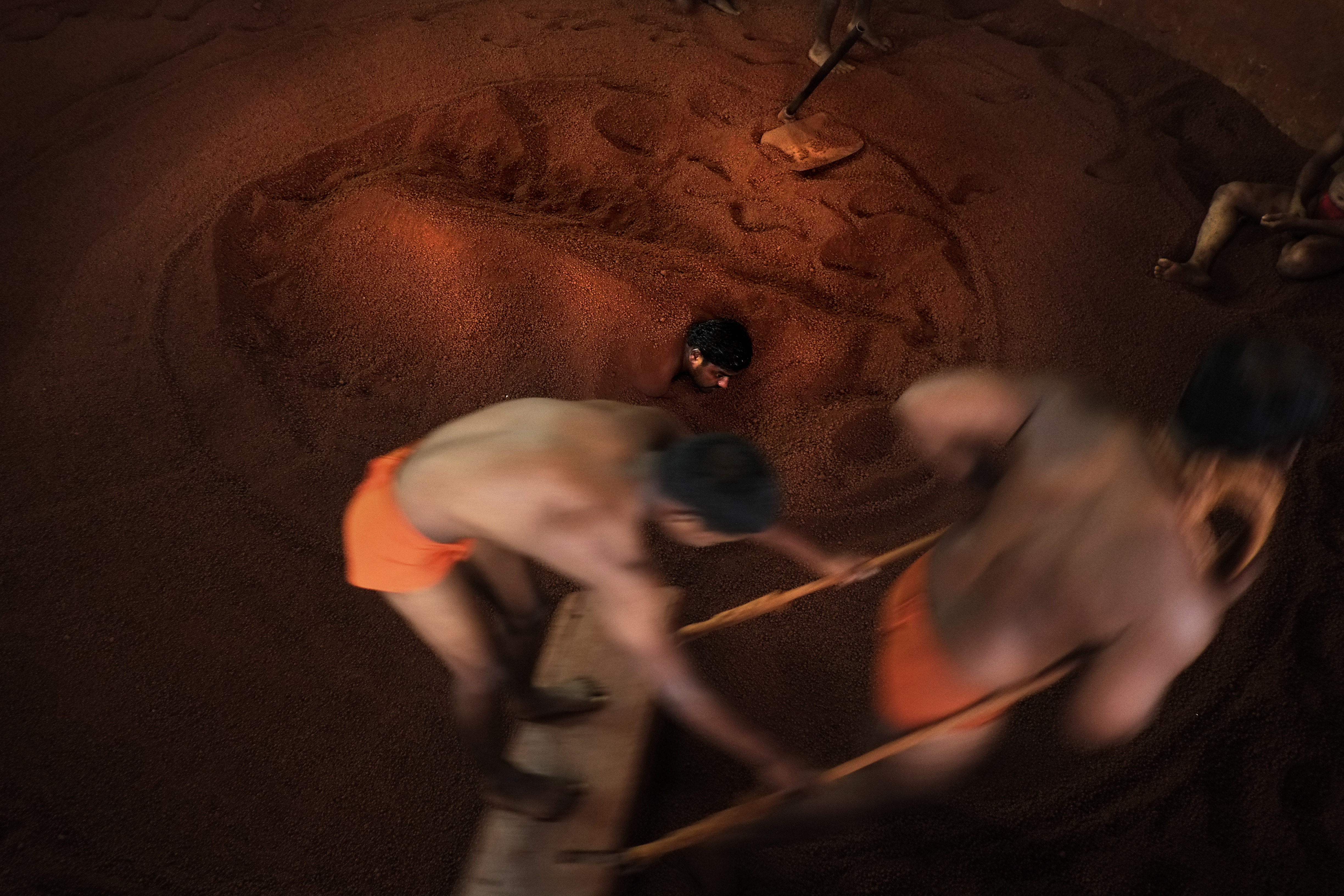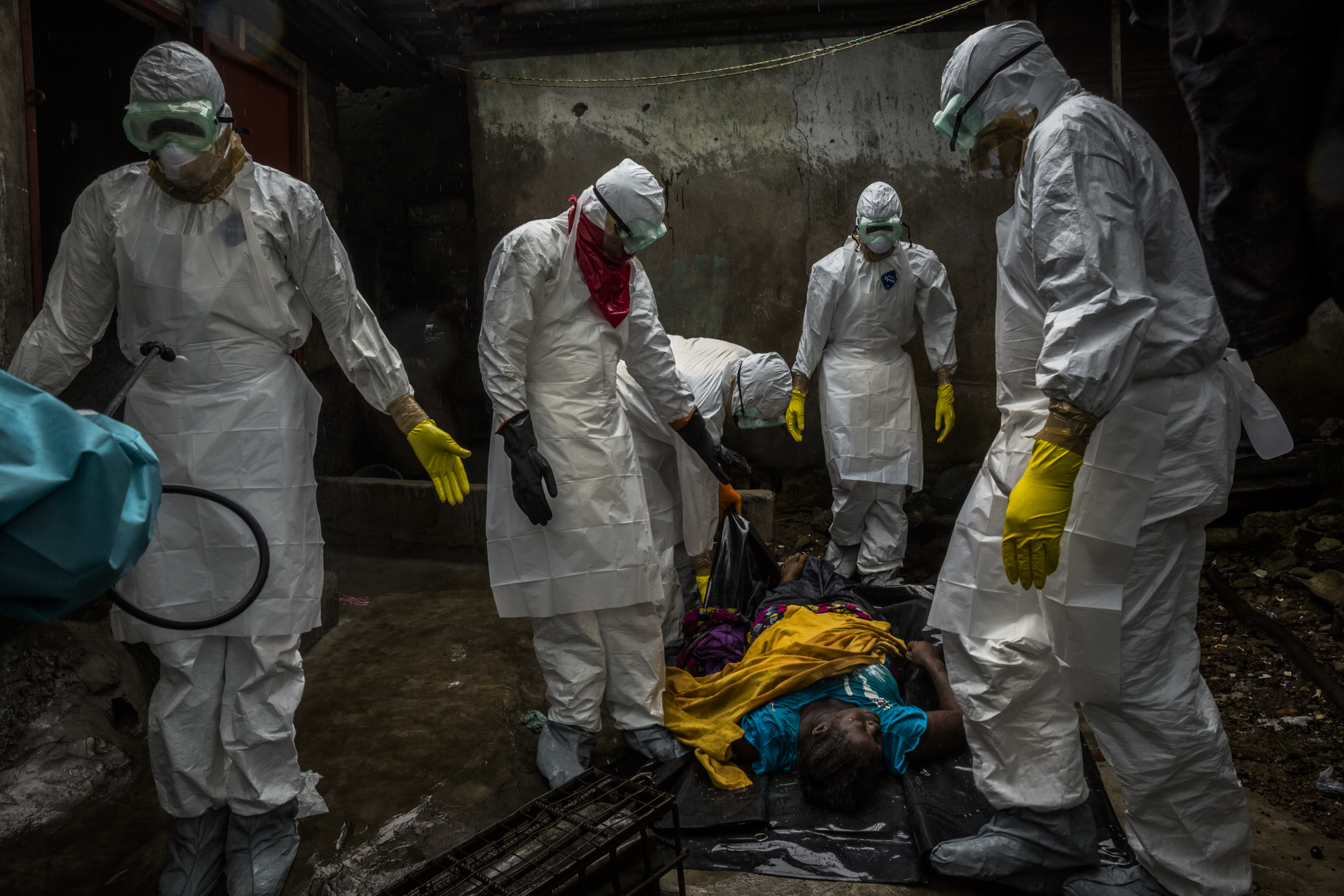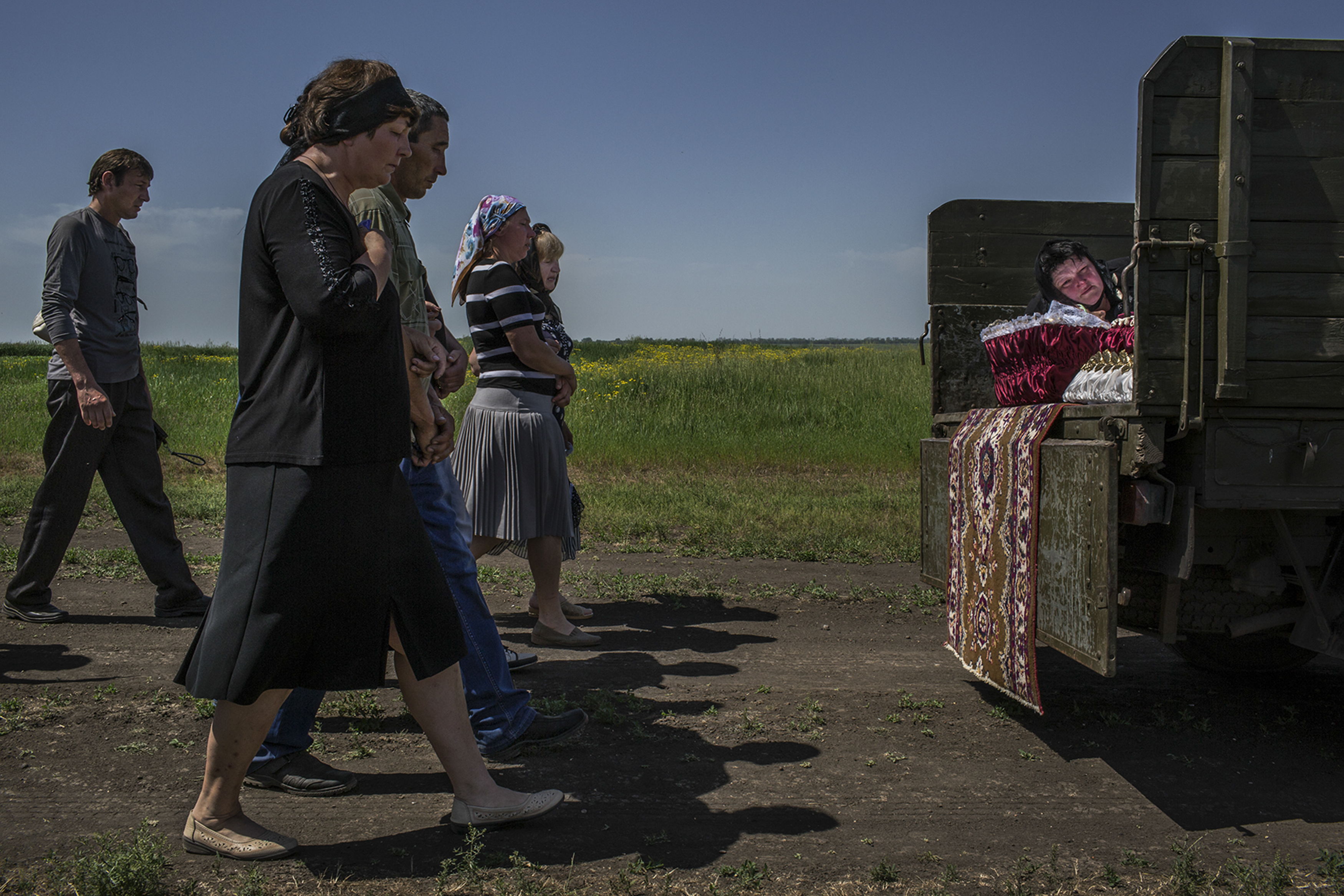AND THE WINNERS OF THE FIPCOM SECOND EDITION ARE…
 19/03/2015
19/03/2015
With over 300 entries, covering a wide array of topics from the Nicaragua Canal to medieval fighting, via the Algerian presidential elections as well as the Greek social and economic crisis… Of course, the second edition of the FIPCOM selection was vastly dominated by the dramatic news in Ukraine, Syria, Gaza and Hong Kong.
Congratulations to all winners! See you at the Institut du Monde Arabe in Paris on September 10 for an exhibit… Or next year?
GRAND PRIZE WINNER
Daniel Berehulak – Ebola

The Ebola outbreak in West Africa first reported in March 2014 and believed by scientists to have started in late December with the death of a two year old boy, believed to have contracted the virus from bats in the remote Guinean village of Meliandou, has rapidly become the deadliest occurrence of the disease since its discovery in 1976. The current epidemic sweeping across West Africa has now killed more than all other known Ebola outbreaks combined. Over 9,000 people had been reported as having died from the disease in six countries: Liberia, Guinea, Sierra Leone, Nigeria, the US and Mali. The total number of reported cases is more than 23,000. Whilst numbers are in decline in Liberia, the epidemic is still far from over in Sierra Leone and Guinea.
NEWS REPORT
Mauricio Lima – Fragmented // The Human Cost of War in Ukraine
After the insurrection in Kiev’s Maidan Square, with the rising number of pro-Russian protesters and the creation of the self-proclaimed Donetsk People’s Republic, instability, fear, and isolation became part of the daily life in eastern Ukraine, especially in the Donetsk and Luhansk densely populated regions. For almost six months in 2014, I witnessed how sorrow was unfolding by the daily killing of civilians to indiscriminate shelling. Following the annexation of Crimea by Russia in April, protesters occupying the Donetsk Oblast administrative building declared independence from Ukraine and held a referendum on separating from Ukraine, on May 11, 2014. The day after, Luhansk also self proclaimed its sovereignty from the country. As officials in Kiev did not recognize their independence, the conflict turned into the scale hostilities. In July, tensions increased even higher after a passenger aircraft of Malaysia Airlines crashed across small villages near Grabovo. In an act of defiant towards Kiev’s government, captured Ukrainian soldiers were paraded by rebels in central Donetsk throughout Lenin Square during Ukraine’s Independence Day, the day before Irina Dovgan, a pro-Ukrainian activist, was displayed and humiliated by passers-by at a check point on the outskirts of the rebel-held city. With empty streets, closed shops, and the harshness of meeting basic needs, the remained residents, mostly elderly and children, were forced to protect themselves in basements, while burying loved ones. More than 5,000 people have been killed so far in the conflict and nearly one million people have fled their homes. The majority of the internally displaced people are elderly. Fighting continues in the Donetsk and Luhansk regions, where many civilians are still unable to leave because of travel restrictions and indiscriminate shelling.
NEWS SINGLE
Baraa Al-Halabi – Aleppo
A man carries a young girl, injured in a reported barrel-bomb attack by government forces on June 3, 2014 in Kallaseh, district in the northern city of Aleppo. Some 2.000 civilians, including more than 500 children, have been killed in regime air strikes on rebel-held areas of Aleppo since January, many of them in barel bomb attacks
SPORTS REPORT
Alain Schroeder – Kushti
Kushti is the traditional form of Indian wrestling established centuries ago in Persia. In vogue during the 16th century Mughal era, this art is practiced in a type of gymnasium called an Akhara. Wearing only a well-adjusted loincloth (“langot”), wrestlers or “Pelwhans” enter a pit made of clay, often mixed with salt, lemon and ghee (clarified butter). This clay, representing Mother Earth is renewed every 2 years. Before every match, each wrestler covers the body of his adversary with this earth whose color varies by region (red in Kolhapur, yellow in Varanasi). During combat, the coated bodies meld with the color of the arena. The rule for winning is simple. Both shoulders must be pinned to the ground. It is strictly forbidden to strangle or throw punches, yet the swollen ears of seasoned wrestlers are testament to the vigorous contact.
SPORTS SINGLE
Gilad Kavalerchik – Triathlon
During the 28th Israeli triathlon championships a sea turtle dives under the three leading triathlon swimmers.














